| Article ID | Journal | Published Year | Pages | File Type |
|---|---|---|---|---|
| 3171737 | Pediatric Dental Journal | 2008 | 7 Pages |
Gingival fibromatosis is a condition of uncommon gingival overgrowth, with hereditary causes regarded to be associated with the most common form. The condition is generally non-inflammatory, though secondary gingival inflammation occurs in some cases due to formation of anaerobic spaces between gingiva and teeth. We present a case of identical twin brothers aged 11 years 9 months who came to our clinic with complaints of gingival esthetic problems. They were both diagnosed with hereditary gingival fibromatosis and gingivectomies were performed. At 14 years 11 months of age, they returned with gingival swelling, though the inflammation and corresponding conditions were significantly different from those seen at the first visit, as the older twin showed severe gingival inflammation, while the younger had moderate inflammation. A microbiological analysis was carried out using a PCR technique, which specifically identified Porphyromonas gingivalis, Treponema denticola, and Tannerella forsythensis in plaque samples taken from sites of severe inflammation in both patients. The numbers of periodontitis-related species decreased as gingival conditions improved with treatment, including removal of calculus and tooth brushing instruction, and microbiological findings were correlated with clinical conditions. Our findings show that monitoring of periodontitis-related bacterial species is beneficial for evaluating the effects of periodontal treatment with a scientific basis.
